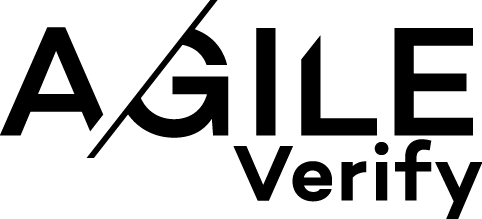AGILE Reporter Newsletter Issue 13 | Q1 | 2023

Date
VERMEG awarded twice by the RegTech Insights Awards APAC 2022 for AGILE Reporter solution
VEREMG is delighted to share that we were recently awarded ‘Best Vendor Solution for APRA APS 220′ & ‘Best MAS 610 Solution’ by the RegTech Insight APAC Awards 2022 for our AGILE Reporter solution.
We are proud to be the winner of these awards, knowing that we have been voted the best by the global audience after a shortlisting and voting process by the financial institution members of the RegTech Insight community.

VERMEG reasserts its commitment to AGILE on the Cloud
Software as a Service (SaaS) continues to be adopted in Banking and is now prevalent when considering Regulatory Reporting solutions. VERMEG have long offered AGILE on the cloud and recognising the importance of data security and controls when dealing with Regulatory data, have for the second year obtained System Organisation Control SOC 2 Type II certification. This independent certification issued by AICPA, is proof of our effective controls relating to Security, Availability, Confidentiality and Processing Integrity.

VERMEG’s SOC 2 Type II report is available to existing and prospective customers on request under a non-disclosure agreement.
Feel free to contact VERMEG’s Sales Representatives for more information.
Monetary Authority Singapore (MAS) publishes updates to TBGS validations, schema, submitted values as part of v2.0

MAS on 22nd March has published and updated version 2.0 of the Top Borrowers Group Survey (TBGS) specifications. In this release MAS has resolved issues encountered by institutions during testing of version 1.0 with some minor adjustments. The consequential version 2.0 of the TBGS submission documents have been released on MASNET and this incorporates feedback received from institutions and findings from testing Version 1.0.
As the adjustments are not expected to require significant system changes, reporting banks are expected to complete implementation of version 2.0 within 12 weeks from its release, or no later than 14 June 2023. MAS expects institutions to strictly adhere to this timeline and the targeted TBGS go-live date remains on 30 June 2023.
All testing for version 2.0 at the Data Collection Gateway (DCG), should be completed by 14th June 2023. The test submission links for version 2.0 have been published in the (DCG) and can be accessed through a link within the TBGS section on MASNET.
The Hong Kong Monetary Authority (HKMA) publishes policy statement around prudential treatment of crypto asset exposures
The Basel Committee on Banking Supervision (“BCBS”) issued on 16 December 22 its final standard on the Prudential treatment of crypto asset exposures , following two rounds of public consultation.
The standard has been developed to provide a global baseline framework for banks’ crypto asset exposures that promotes responsible innovation while preserving financial stability.
To determine, HKMA wants the reporting banks to be aware that some areas, such as permission-less blockchains and additional statistical tests to identify low risk stable coins, will remain subject to monitoring and further review by the BCBS.
The final standard is scheduled to be implemented by member jurisdictions by 1 January 2025, and HKMA mentioned its intention to implement it locally in accordance with the BCBS timetable. The industry will be consulted on the specific local implementation proposal in due course.

Read the blog and know more about the prudential classifications board groups, additional key features of the standard and how to familiarize with the crypto assets’ new standard.
Further thoughts on Commercial Real Estate (CRE)
More Reports on CRE
Since we last commented on this topic ( “Risk in Commercial Real Estate Lending”), there have been more reports on the Commercial Real Estate (“CRE”) market and its worrisome outlook, so we felt it pertinent to put pen to paper once more.
In one report it is indicated that “Smaller banks hold around $2.3 trillion in commercial real estate debt, including rental-apartment mortgages, according to an analysis from data firm Trepp Inc. That is almost 80% of commercial mortgages held by all banks” (Konrad Putzier and Peter Grant, The Wall Street Journal, March 21, 2023).
According to the same report from The Wall Street Journal, $270 billion of the outstanding CRE loans will come due this year and will likely test the financial health of the lenders.
This is not to sound alarm that there is a looming disaster ahead. The borrowers, indeed, could fulfill their obligations and prove that their financial health is live and vibrant. But it is also the case that some of the loans that are maturing will require refinancing, which will now be subject to higher interest rates while at the same time, the lack of demand for CRE properties has adversely affected the CRE property values.
Regulators are getting ready
Considering all this, it is telling that back in September 2022, the U. S. regulatory agencies stated that:
“The proposed statement is timely in the post-pandemic era, as trends such as increased remote working may shift historic patterns of demand for commercial real estate in ways that adversely affect the financial condition and repayment capacity of CRE borrowers.”
The “proposed statement” in this case pertains to an amendment on Prudent Commercial Real Estate Loan Workouts, which address an array of topics, ranging from how to determine a troubled debt restructuring and nonaccrual status, to accounting changes and providing short-term loan accommodations to help adversely affected borrowers.
The regulators’ intent appears to be to blunt and minimize the impact on the banking institutions brought on by the downturn in CRE market and prevent systemic panic, which, as was seen in the recent banking crisis, could cause bank-runs faster than any meaningful remedy could be taken.
If you are interested in discussing any of the points in this article or want to find out how VERMEG RegTech solutions can bring agility and competitive advantage to your business, please feel free to reach out to us at communication@vermeg.com or click Contact us.
Non-Performing Exposures – The start of a trend?
A few weeks ago, the PRA (Prudential Regulation Authority) announced a change to the capital rules for consultation (PRA CP 06/23). At present, non-performing exposures are deducted from Capital, subject to various factors and adjustments. The proposed change removes this rule entirely from Q4 this year. Non-performing exposures (NPE) no longer get their own line in the Capital+ and CA1 returns, and the three NPE returns are to be removed entirely. This means that rather than being ineligible for capital by virtue of being NPEs, NPEs are instead assessed according to standard accounting criteria, allowing them to contribute to the Capital position of the firm.
As a change to the reporting process this is minor news. It’s not hard to achieve, and the end of year timeline gives plenty of time for implementation. But the implications of this move are more interesting.
Read the full blog and know more about:
- What’s driving the change in the UK (United Kingdom) and the EU (European Union) countries
- How they reduce what could have been a dramatic divergence between the EU and the UK down to a gentle drift.
- What is the impact of this divergence and what can lead to greater divergence.
We have several factors coming into play. The EBA’s (European Banking Authority’s) present line that the pace of Basel 3.1 changes will be set country by country via differing transitional provisions. The deliberate introduction of rules to differentiate once country from another. The usual idiosyncratic reaction of individual regulators to global rules proposals, such as ESG (Environmental, Social and Governance) compounded by additional regulators joining a consensus rules set they hadn’t previously followed as we can see in East Asia and the US. And of course, the rapidly rising cost of capital and liquidity.
All these combine to give us the perfect conditions for two changes. Companies shifting assets to take advantage of local regulations, and markets anticipating these shifts, changing market behavior. When telling people in your firm about upcoming changes for NPEs in the UK, it might worth considering how to communicate these changes in future. The changes will keep on coming, how quickly the company reacts is likely to only get more critical over time.

AGILE Suite 23.2 Upgrade
Another quarter, another set of improvements to the AGILE suite!
Enhancements:

/ Supporting multiple return submissions in ‘one click’ (e.g., Singapore’s TBGS Return).
/ For US and Canadian returns:
- Return cell drilldowns are now supported, alongside report filtering, sorting and templates.
- AGILE Analytics cell breakdown are also supported.
/ Sums and Validations functionality has been extended to include cross-grid lookups & calculations. Data between grids can now be matched on an arbitrary key.

/ Our GDR solution continues to develop with support for 4-eyes approval of datasets. In addition to the ability to lock datasets, the system can now be opted-in to require approval for any dataset changes, utilizing maker-checker authorization workflow. This process is fully audited.
/ Added support for housekeeping of log files. This is an optional feature with frequency period configurable by user.

/ Added support for ECR Reporting framework using DPM 3.2.
Corrections:
/ Report date values are now not offset by server time zone difference.
/ Improvements to AGILE Reporter’s ASCII Loader for scientific notation and special lead characters.
/ Various improvements to AGILE Analytics for data presentation and filtering.
/ Warning on submission if values contain characters not in submission character set.